Summary
Meeting for the First Stage of River Survey Activities
When:
September 8th, 2007, 13:30-16:00
Where: Meijo Sewage Treatment Plant, Nagoya City
On September 8th, 2007, the first summary meeting was held in the third-floor conference room at the Meijo Sewage Treatment Plant.
The objectives of this meeting were as
follows:
(1)
Reporting findings of the first-stage survey carried out from April 22 to
June 30
(2) Sharing information and experiences which were not readily apparent from
@@statistical and numerical data alone
(3) Making use of this information to aid future survey and river cleanup activities
@@as much as possible
@About 30 groups and 100 people participated in the meeting, and discussed the environment of the Horikawa River with earnestness and enthusiasm as well as humor.
The participants were able to exchange opinions with city government officials in a relaxed atmosphere.
It was considered to be a very worthwhile meeting by all.
At the end of the dayfs meeting, it was decided to enter into the second stage of survey activities. In response, the participants showed even greater enthusiasm in anticipation of this second stage!
ËMeeting contents and citizensf reports from the first-stage survey (Japanese)
ËOfficial results of survey from the Nagoya city government (Japanese)
ËNewspaper report on the first stage survey (Japanese)
ËNewspaper report on this meeting (Japanese)
ËSewerage measures undertaken by Nagoya city government to improve Horikawa water (Japanese)
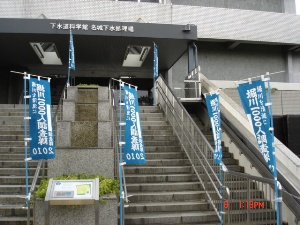 |
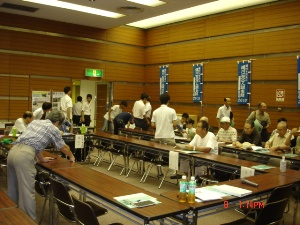 |
|
| This is the entrance to the conference hall of the Meijo Sewage Treatment Plant on the day of the first survey meeting. | Members of the survey groups gathered in this conference hall before the opening ceremony. | |
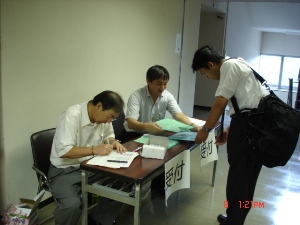 |
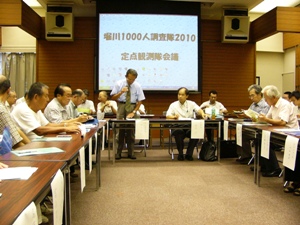 |
|
| This is the reception area for the first survey meeting. |
The meeting began at 13:00. The opening address was given by Mr. Umemoto, Executive Chairperson of the Survey Groups. He began the address with an amusing story about cormorants and eels in the Horikawa River. |
|
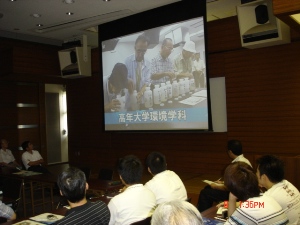 |
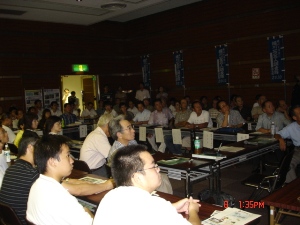 |
|
| First, the participants watched a 10-minute introductory video. | Around 100 members of the survey groups had filled the room by this point. | |
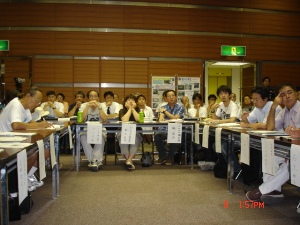 |
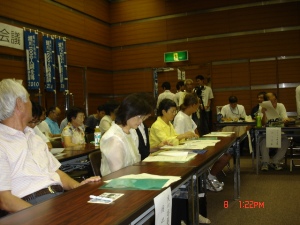 |
|
|
Citizens and officials gave their reports one after the other.All those present listened intently as the survey results were presented. |
The members exchanged ideas and opinions one after another, and the conference room was alive with enthusiasm for the next two and a half hours. | |
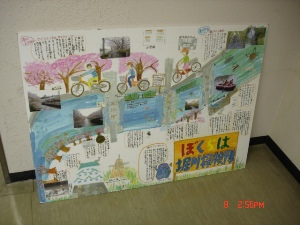 |
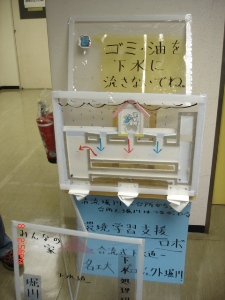 |
|
| During the break time, works by Free Research Groups were open to the public. | This photograph shows the robot made by Project Horikawa Oentai. It helps
teach about the combined sewer system. @ @In August 2007, it was featured in the Horikawa Eco-Robot Contest, where it was highly praised for providing an easy-to-understand way for the participants to learn about the combined sewer system! @ |
|
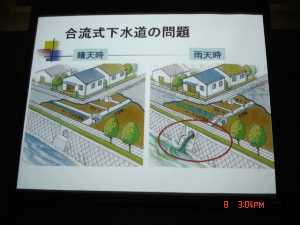 |
A research group gave us a detailed account of the relation between rainfall
and pollution of the Horikawa River. ËThe state of the Horikawa River during periods of rainy weather (Japanese) The Water and Sewage Bureau of Nagoya City explained the improvement measures for the combined sewer system in order to improve water quality in the Horikawa River. ËExplanation of combined sewer system improvement measures (Japanese) |
|
| In addition, some members voiced concerns that merely waiting for improvements
to the sewer system would take too much time and money, and proposed that
we work towards more eco-friendly lifestyles, and make changes in the way
water is used, in order to reduce the pollutant load on the Horikawa River. A consensus was reached to conduct a more detailed examination of the relationship between rain and water quality of the Horikawa River, working in close cooperation with research groups. |
||
In addition, there were many other
question-and-answer sessions and proposals from participants in this
dayfs meeting.
|
|
|